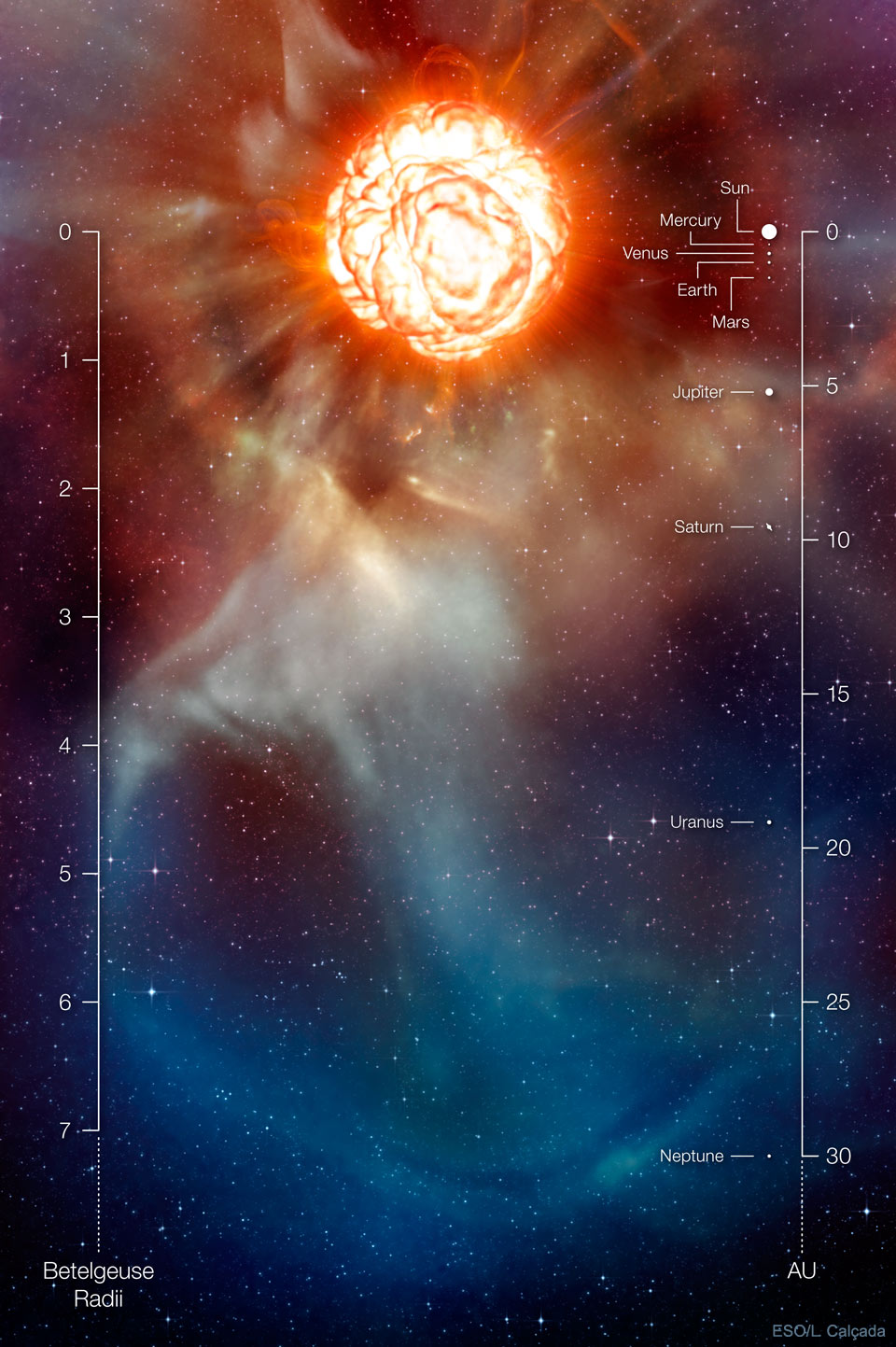2020 January 1
Betelgeuse Imagined
Illustration Credit: ESO, L. Calcada
Explanation: Why is Betelgeuse fading? No one knows. Betelgeuse, one of the brightest and most recognized stars in the night sky, is only half as bright as it used to be only five months ago. Such variability is likely just normal behavior for this famously variable supergiant, but the recent dimming has rekindled discussion on how long it may be before Betelgeuse does go supernova. Known for its red color, Betelgeuse is one of the few stars to be resolved by modern telescopes, although only barely. The featured artist’s illustration imagines how Betelgeuse might look up close. Betelgeuse is thought to have a complex and tumultuous surface that frequently throws impressive flares. Were it to replace the Sun (not recommended), its surface would extend out near the orbit of Jupiter, while gas plumes would bubble out past Neptune. Since Betelgeuse is about 700 light years away, its eventual supernova will not endanger life on Earth even though its brightness may rival that of a full Moon. Astronomers — both amateur and professional — will surely continue to monitor Betelgeuse as this new decade unfolds.
狂想参宿四
图片提供: ESO, L. Calcada
说明: 为何参宿四会变暗?没人知道原因。参宿四是地球天空中最亮和最易辨识的数颗恒星之一,不过,它目前的亮度只有5个月前之半。对这颗著名的超巨变星而言,或许这种变异性只是正常而已,然而它最近变暗的行为,却重新炒热参宿四何时会发生超新星爆炸的讨论。以色泽泛红著称的参宿四,是现代望远镜勉强可以解析的寥寥数颗恒星之一。这幅画家绘制的主题图示,想像当近距离观看参宿四或许能见到的面貌。 参宿四咸认应有个复杂而湍动的表面,常常喷出大规模的闪焰。如果把太阳换成参宿四(万万不可啊!),它的表面会伸展到木星轨道附近,而它湍动的羽状云,会喷洒到海王星的后方。因为参宿四的距离约有700光年远,当它发生超新星爆炸时,纵然亮度可以和满月争辉,但并不会危及地球上的生命。而在这个2020年代,不管是业余或专业天文学家,必然会持续监测参宿四。







